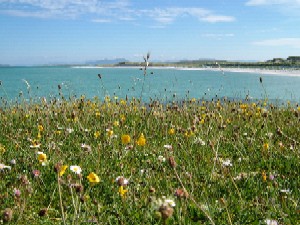Patterning of biological and functional diversity
 Developing effective conservation policy for biodiversity involves a working understanding of two main components: (i) appropriate measurement and description of biodiversity as it stands, and (ii) the processes involved in maintaining this biodiversity. The work undertaken here combines both. Our work on the Scottish Machair system in the Western Isles focuses on the spatial component of biodiversity – how plants are arranged in space – and investigates how environmental factors might affect the rarer species differently from the common species. We have taken a number of different approaches, including: Developing effective conservation policy for biodiversity involves a working understanding of two main components: (i) appropriate measurement and description of biodiversity as it stands, and (ii) the processes involved in maintaining this biodiversity. The work undertaken here combines both. Our work on the Scottish Machair system in the Western Isles focuses on the spatial component of biodiversity – how plants are arranged in space – and investigates how environmental factors might affect the rarer species differently from the common species. We have taken a number of different approaches, including:
- Comparing the diversity patterns of rare species with those of common species. Are the patterns similar, suggesting that diversity of common and rare is controlled by the same processes?
- Matching these patterns with environmental factors to see if rare species match the same factors as common species.
- Experimentally manipulating potentially important drivers of biodiversity patterns, including disturbance (sand burial), grazing levels and windspeed, while recording the spatial structure of all species in a hierarchical nested design. Do these drivers affect common and rare species equally? Do they change the spatial distribution patterns (patchiness) of common and rare species to the same degree (if at all)?
- Surveys of species distribution nested at multiple spatial scales throughout the islands, contrasting the cropped Machair with the pasture. The idea here is to see if the geographical context of surrounding land use affects the biodiversity patterns of Machair species at a local level.
|